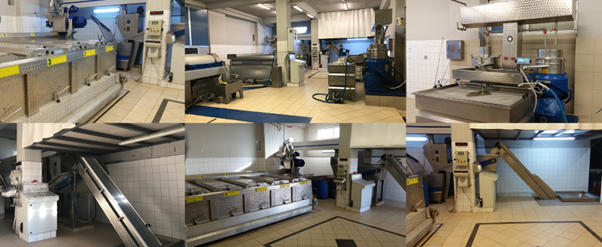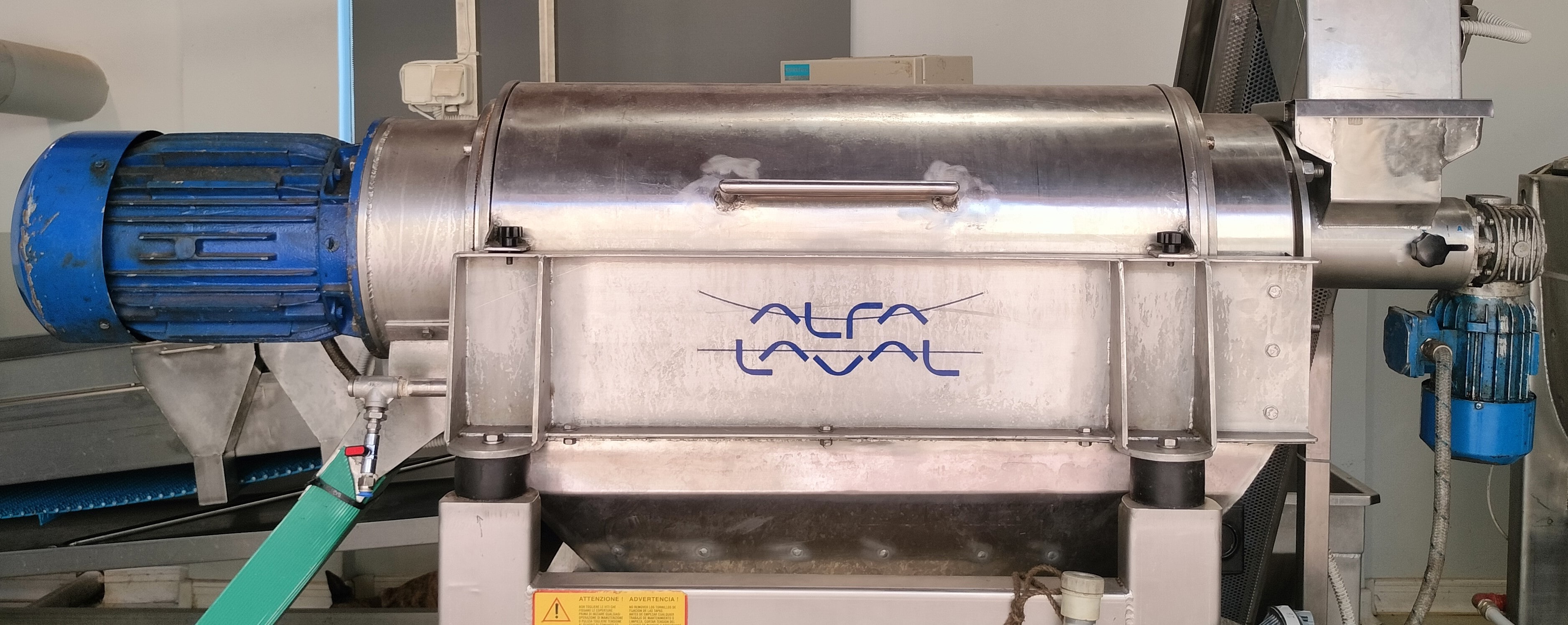Olive Oil Production Stages

This post is also available in:
This post is also available in:
![]() Français (French)
Français (French) ![]() Deutsch (German)
Deutsch (German) ![]() हिन्दी (Hindi)
हिन्दी (Hindi) ![]() Türkçe (Turkish)
Türkçe (Turkish) ![]() Ελληνικά (Greek)
Ελληνικά (Greek)
The process of oil extraction refers to all the treatments to which the olive fruit is subjected, with the aim of producing the final product, the olive oil. From the transport of the olive tree to the olive mill until the receipt of the final product, we encounter the following stages:
- Receiving the olive fruit
- Defoliation
- Washing
- Crushing (milling)
- Malaxation
- Separation of olive oil from the olive paste
- Final separation
Receiving the olive fruit
As it is obvious, the time the olive fruit remains in the olive mill before processing must be limited to the minimum possible, to avoid any deterioration.
Defoliation
In general, removing the leaves is imperative because when they are crushed together with the fruit, the quality of the olive oil deteriorates. For example, it acquires a bitter taste, while at the same time a large amount of chlorophyll that is present enhances the oxidation of fatty matter through photooxidation. However, according to recent research, it has been found that the presence of a small number of leaves (about 3%) not only does not harm but can have a positive effect on the final product. More specifically, it enriches olive oil with phenols, which act as antioxidants, increasing its resistance to oxidation in the absence of light.
Washing
Washing is definitely a necessary process, since, through it, foreign materials (such as soil) and pesticide residues are removed. Unfortunately, these residues are present in the fruit, due to the spraying done incorrectly before the harvest, and not respecting the minimum time since the last spraying as recommended.

Photo from the oil mill where the olive oil “Spiliotopoulos Family” is produced
Crushing (milling)
It is the first main stage of olive fruit processing. In classic olive mills, crushing takes place in olive mills.

Of course, the classic oil mills in most areas have been replaced almost entirely by centrifugal mills. In these, as well as in the improved classical type, metal crushers (hammer mills) are used.

These metal crushers have advantages over oil mills, as they are smaller in size and cost, have higher efficiency, and are easier to clean. However, their main disadvantage is the fact that olive oil is often burdened with traces of metal.
A general principle is that crushing must be carried out in low-speed machines, because in the case of high speeds, the temperature of the olive paste also increases, resulting in the formation of emulsions.
Malaxation
It is the most basic stage, as it is through this that the oil droplets coalesce into larger drops of olive oil. This combination is particularly important for the subsequent separation of the olive oil from the vegetable fluids. If the malaxation time is extended, emulsions are created and therefore this separation becomes difficult.

The contact of the olive paste with the oxygen should also be avoided, in order to limit the losses in aromas, but also the initiation of oxidative rancidity. Also, it is possible that even a small amount of air trapped in the product will cause oxidation later, i.e. during storage. At the same time, it is important to avoid temperatures above 27°C, because otherwise the volatiles are destroyed, while is also created an unwanted reddish color. Malaxation in a nitrogen atmosphere increases the concentration of antioxidants.
The cold pressing technique (temperatures below 27°C) helps preserve both the nutrients (such as Vitamin E) and the organoleptic characteristics of the final product.
Separation of olive oil from the olive paste
It can be done by:
- Pressing
- Centrifugation
- Percolation
Each method is characterized by specific comparative advantages and disadvantages. Pressing as a separation method is characterized by its low cost and the energy economy it offers. At the same time, at the end of the process, only a little moisture and a small percentage of olive oil remain in the olive core. However, it is not a continuous process, it carries high labor costs and the oil paste that remains in the scourtins and, as a result, the final olive oil is getting degraded.
The main advantages of centrifugation are its automatic operation and the absence of the scourtins mentioned above (therefore, the degradation is avoided). However, the cost of centrifugation is quite high and as a process, it is energy intensive. In addition, when too much water is used, phenols are lost and when high temperatures are applied, aromatics are lost. Finally, a large percentage of moisture is retained in the olive kernel.
When percolation is used as a separation method, the aromatic and phenolic components of the olive fruit pass into the final product (olive oil). Another advantage of this particular method is the fact that it works in a fully automated way. However, it is a more time-consuming process, as centrifugation is also required to collect the whole quantity of olive oil. Finally, the existence of blades in the equipment makes it more difficult to clean, while the large surfaces of the machine make oxidation take place easier.
Final separation – Olive oil purification
In this stage the machine used is the oil separator. The success of the separation is affected by the specific gravity of the olive oil, the shape, and dimensions of the olive oil droplets, the viscosity, and the temperature. It is obvious that it is easier to separate the components as the difference in their specific gravity is getting bigger. At the same time, the larger the olive oil droplets and the lower the viscosity of the liquid phase, the easier the separation. Regarding the temperature, it is true that the higher it is, the more it favors the separation, but it degrades the quality of the product.
A technique that has been tested by several researchers to facilitate the extraction of olive oil is the use of pectinolytic enzymes. They observed an increase in the oxidation stability of the olive oil and a parallel increase in volatiles.
Finally, filters can be used, as in the image below, in order to retain floaties.

Photo from the olive mill where “Kleio” olive oil is produced
References
Κυριτσάκης, Α., Ελαιόλαδο, εκδ. CCITY PUBLISH, Θεσσαλονίκη, 2007









































































